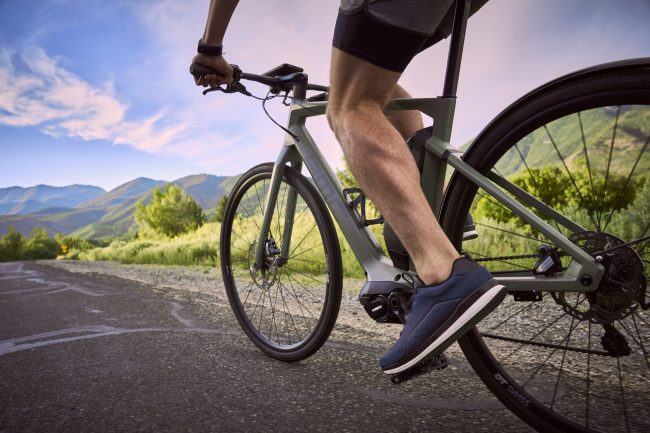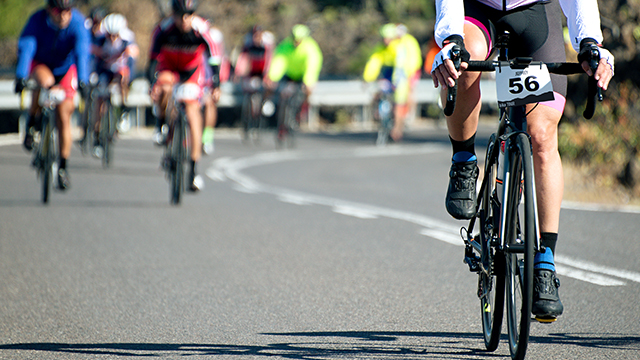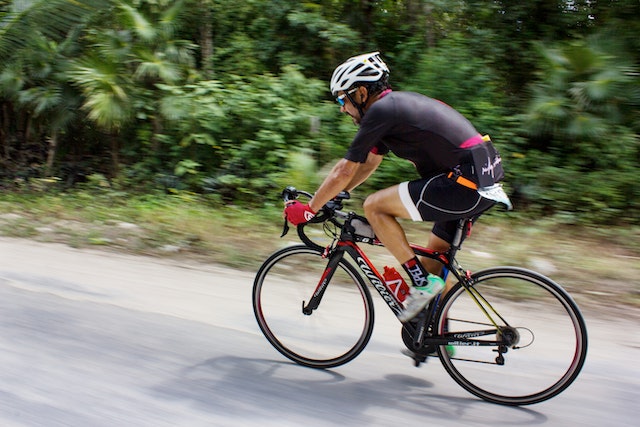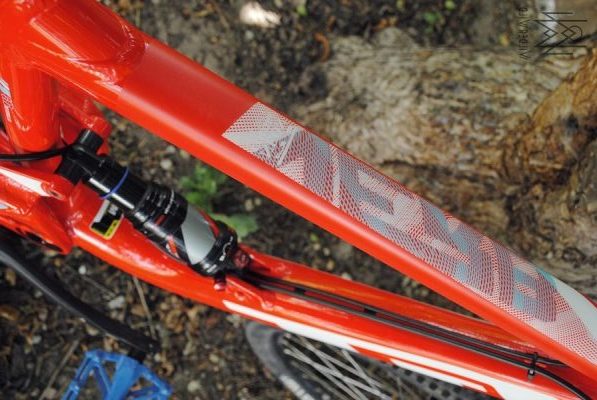Do you ever feel like your bike is dancing with you? Like a synchronized partner, gliding effortlessly across the pavement? If not, don’t worry! You can unlock the secret to this rhythmic bliss by improving your cadence on your bike.
Cadence, the speed at which you pedal, is like the heartbeat of your ride. It determines your efficiency, power, and overall performance. So, how can you enhance this vital aspect of your cycling experience?
In this article, we’ll explore proven strategies to help you find your cycling groove. From perfecting your pedal stroke to incorporating interval training and strength exercises, we’ll guide you on the path to unlocking your full potential.
Get ready to join the cycling community and experience the joy of belonging as you become one with your bike. Let’s dive in and elevate your cadence to new heights!

1. Understanding Cadence and Its Importance in Cycling
If you want to become a faster and more efficient cyclist, it’s essential to understand the importance of cadence and how it can improve your performance on the bike.
Cadence refers to the number of revolutions your pedals make per minute (RPM). It might not seem like a big deal, but maintaining the right cadence can make a huge difference in your cycling experience.
Why is cadence so important? Well, it directly affects your speed and endurance. Finding the optimal cadence for your body and riding style can help you generate more power and maintain a steady pace.
Pedaling at a higher cadence, around 80-100 RPM, allows you to distribute the workload more evenly between your muscles, reducing fatigue and making your ride more comfortable.
On the other hand, a low cadence, below 70 RPM, can put unnecessary strain on your muscles and joints, leading to fatigue and potential injuries. So, it’s crucial to find the right balance and cadence that works best for you.
Improving your cadence takes practice and patience. Start by gradually increasing your RPMs on your rides. Focus on spinning your pedals smoothly and maintaining a consistent rhythm. You can also incorporate interval training and hill repeats to challenge yourself and build strength.
Remember, cycling is all about finding your own rhythm and feeling connected to the bike. By understanding the importance of cadence and working on improving it, you’ll become a more efficient and confident cyclist, enjoying every moment on the road.
So, hop on your bike, find your cadence, and let the rhythm carry you to new heights.
2. Improving Pedal Stroke Efficiency
Surprisingly, enhancing the efficiency of your pedal stroke can be the key to achieving a remarkable cadence on your two-wheeler. When it comes to cycling, having a smooth and efficient pedal stroke is essential for maximizing your power output and maintaining a consistent cadence. So, how can you improve your pedal stroke efficiency?
First, focus on maintaining a circular motion throughout your pedal stroke. Imagine a table with three rows and two columns. In the first column, imagine a row of circles representing the forward push of your foot, while in the second column, visualize a row of squares representing the pull-back motion. Aim to apply force evenly in both columns, creating a balanced and efficient pedal stroke.
Next, work on eliminating any dead spots in your pedal stroke. Imagine another table with three rows and two columns. In the first column, visualize a row of circles representing the power phase, while in the second column, imagine a row of squares representing the recovery phase. Aim to minimize any gaps between the circles and squares, ensuring a seamless transition from one phase to another.
By improving your pedal stroke efficiency, you’ll not only increase your cadence but also reduce fatigue and improve your overall cycling performance. So, focus on maintaining a circular motion and eliminating dead spots to unlock the full potential of your cadence on the bike. Keep practicing, and soon you’ll be pedaling with ease and achieving your desired cadence.
3. Utilizing Interval Training for Cadence Improvement
Utilizing interval training is a game-changer for boosting your cadence and unleashing your cycling potential. Interval training involves alternating periods of high-intensity effort with periods of recovery. By incorporating this type of training into your routine, you can improve your cardiovascular fitness, increase your leg strength, and ultimately enhance your cadence.
To begin, find a stretch of road or a stationary bike where you can safely perform your intervals. Start with a warm-up of about 10 minutes, gradually increasing your cadence. Once you’re warmed up, choose a high-intensity effort that pushes your limits. This could be sprinting for 30 seconds or maintaining a fast pace for a minute.
After completing your high-intensity effort, allow yourself a recovery period of equal or slightly longer duration. During this time, focus on maintaining a steady but relaxed cadence. Repeat this cycle of high-intensity effort and recovery for about 20-30 minutes, gradually increasing the number of intervals as you progress.
Remember to listen to your body and adjust the intensity and duration of your intervals accordingly. It’s important to challenge yourself but also give yourself enough time to recover. As you continue to incorporate interval training into your routine, you’ll notice improvements in your cadence, endurance, and overall cycling performance.
So, grab your bike, find a suitable training area, and start incorporating interval training into your rides. You’ll not only improve your cadence but also become part of a community of cyclists who are always striving for greatness. Your cycling potential is limitless, and interval training will help you unlock it.
4. Incorporating Strength Training for Increased Power
Incorporating strength training into your routine can significantly boost your power output, leading to greater cycling performance. Did you know that cyclists who incorporate regular strength training see an average increase in power output of 20%?
Here are three reasons why incorporating strength training into your routine can make you feel like a stronger and more confident cyclist:
- Increased Endurance: By engaging in strength training exercises, you can build stronger muscles that help you power through tough uphill climbs and long rides. You’ll feel a sense of accomplishment and pride as you push through and conquer challenging terrains.
- Enhanced Speed: Building strength through targeted exercises can improve your overall cycling speed. As your muscles become stronger, you’ll notice that you can pedal faster and maintain a higher cadence, enabling you to keep up with and even surpass your fellow cyclists.
- Injury Prevention: Strength training not only improves your power output but also helps prevent injuries. By strengthening the muscles around your joints, you’ll have better stability and support while cycling, reducing the risk of common cycling injuries. This will give you peace of mind and allow you to fully enjoy your rides without worrying about potential setbacks.
By incorporating strength training into your routine, you’ll not only improve your power output but also feel like a valued member of the cycling community who’s capable of taking on any challenge that comes your way. So, grab those weights, hit the gym, and get ready to experience the exhilarating benefits of strength training on your bike!
5. Monitoring and Adjusting Your Cadence for Optimal Performance
Maximize your cycling performance by closely monitoring and adjusting your cadence, allowing you to effortlessly glide through the roads with a powerful and fluid pedal stroke.
Cadence refers to the number of pedal revolutions per minute (RPM). Finding your optimal cadence can help you ride longer, faster, and with less fatigue.
Start by paying attention to your current cadence and aim for a range of 80 to 100 RPM. Use a bike computer or a cadence sensor to track your cadence during rides and make adjustments accordingly.
To increase your cadence, focus on spinning the pedals faster rather than pushing harder on each stroke. This will help you maintain a smooth and efficient pedal stroke.
Practice spinning at a higher cadence during your training rides by shifting to a lower gear. Initially, it may feel awkward or uncomfortable, but with time and practice, it will become easier and more natural.
As you monitor your cadence, also pay attention to how it feels. Adjusting your cadence can help you find a comfortable rhythm that suits your riding style and the terrain you’re cycling on.
For example, on flat roads or during a sprint, a higher cadence may be more efficient. On the other hand, when climbing hills or powering through tough conditions, a lower cadence may give you more power and control.
By monitoring and adjusting your cadence, you’ll be able to find your sweet spot and optimize your cycling performance. Remember, it’s all about finding what works best for you and your riding style.
So, keep pedaling, stay consistent, and enjoy the ride!
Frequently Asked Questions
How do I choose the right gear ratio for improving my cadence?
Choose a gear ratio that complements your cadence goals. Aim for a balance between power and speed. Experiment with different ratios to find the sweet spot that makes you feel comfortable and connected to your bike.
Can I improve my cadence without investing in expensive equipment?
Yes, you can definitely improve your cadence without spending a lot of money on expensive equipment. There are simple exercises you can do, like practicing in a lower gear and doing high cadence intervals, that can help you improve.
Are there any specific stretches or exercises that can help improve cadence?
To improve your cadence on your bike, try incorporating stretches and exercises that target your leg muscles. Engage in activities like lunges, squats, and calf raises to strengthen and increase flexibility, ultimately enhancing your cadence.
How long does it usually take to see noticeable improvements in cadence?
It usually takes a few weeks to see noticeable improvements in cadence. Consistently practicing exercises and stretches at least 3-4 times a week will help you see progress and increase your cadence over time.
Conclusion
So there you have it, my friend! By focusing on improving your cadence on your bike, you can unlock a world of cycling bliss. Remember, it’s all about finding that sweet spot where your pedal stroke efficiency is at its peak. Adding interval training and strength exercises to your routine will give you the power you need to conquer any road. Don’t forget to keep a close eye on your cadence and make adjustments as needed.





